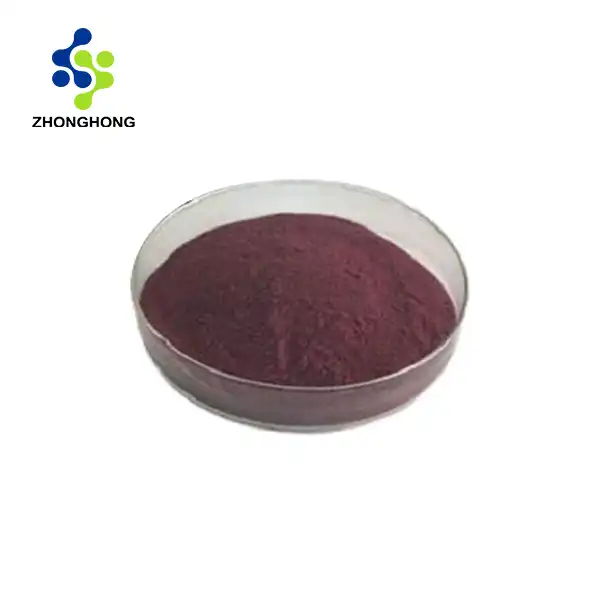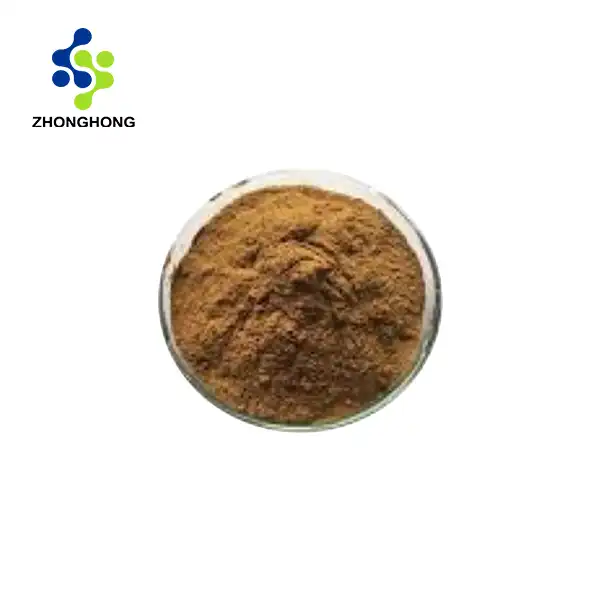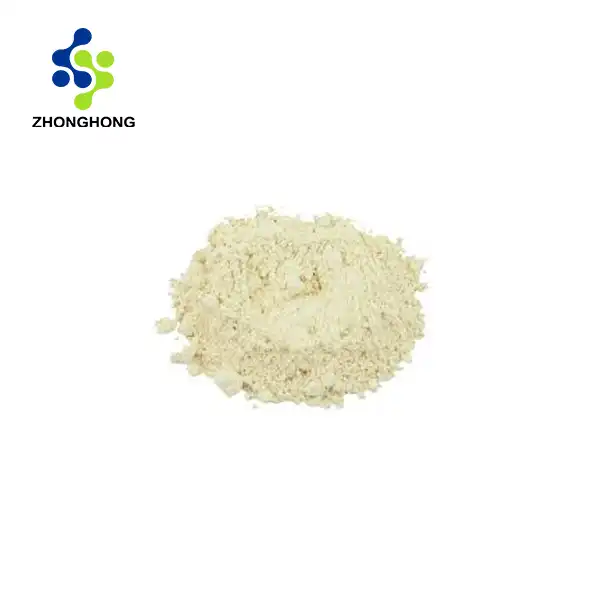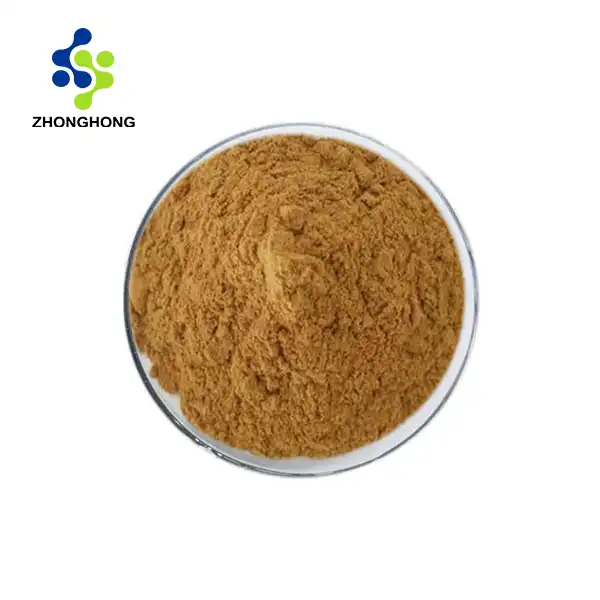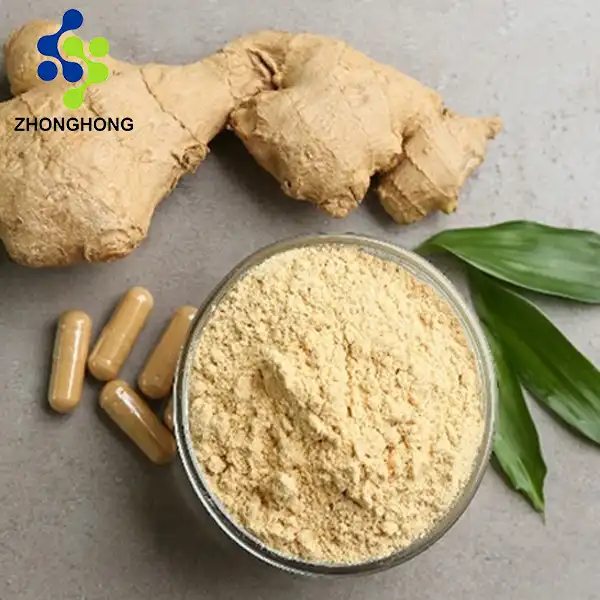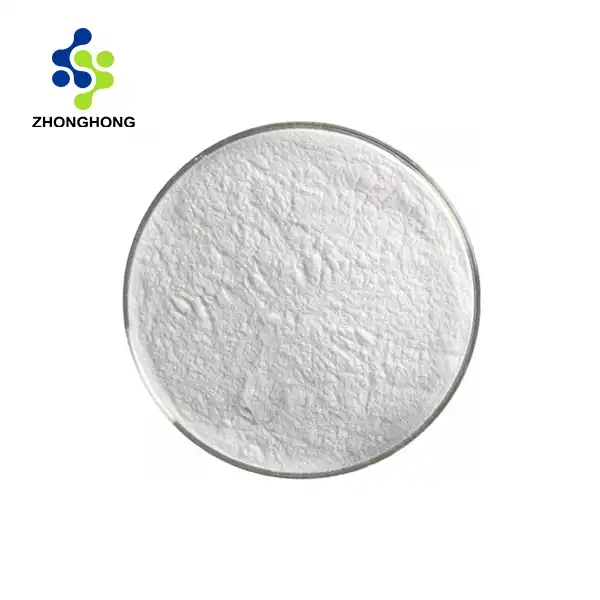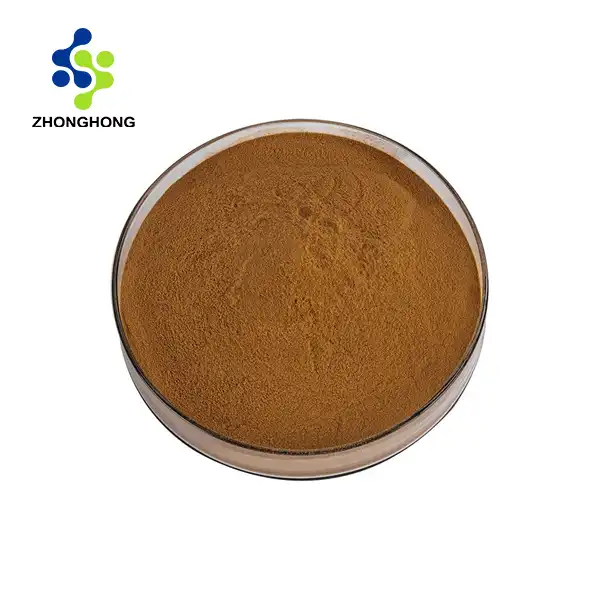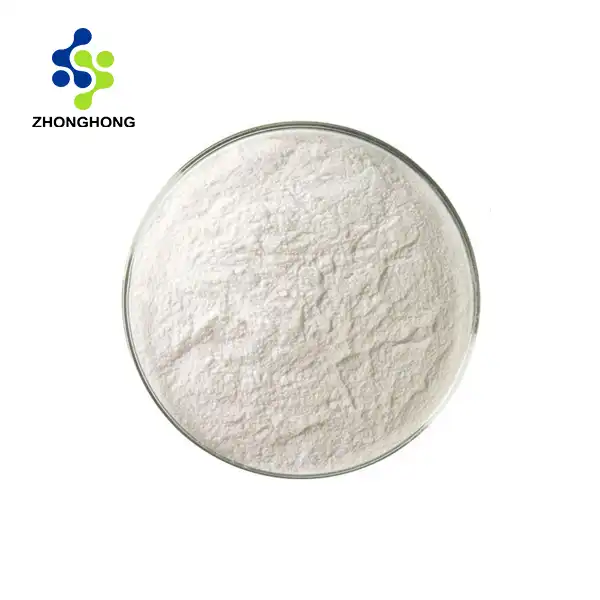Can you mix kojic acid powder vitamin?
2025-01-19 15:00:16
Mixing kojic acid powder with vitamins is a topic of interest for many in the skincare and cosmetic industries. While it's possible to combine kojic acid powder with certain vitamins, it's crucial to understand the potential interactions and effects before doing so. Kojic acid, known for its skin-lightening properties, can be sensitive to oxidation and pH changes. When mixed with vitamins, particularly those that are acidic or have strong antioxidant properties, the efficacy of both compounds may be affected. For instance, combining kojic acid with vitamin C might enhance the overall brightening effect, but it could also increase skin sensitivity. On the other hand, mixing with vitamin E might help stabilize kojic acid and provide additional antioxidant benefits. However, it's essential to consider factors such as product stability, skin type, and desired outcomes when formulating or using such combinations. Professional guidance and careful formulation are recommended to ensure optimal results and minimize potential adverse reactions when mixing kojic acid powder with vitamins.
Understanding Kojic Acid Powder and Its Properties
Chemical Structure and Stability
Kojic corrosive powder, inferred from different organisms species, is a characteristic compound with the chemical equation C6H6O4. Its atomic structure comprises of a five-membered ring with a hydroxyl and a ketone bunch, contributing to its special properties. This course of action makes kojic corrosive vulnerable to oxidation, particularly when uncovered to discuss and light. The soundness of kojic corrosive is significant for keeping up its adequacy in skincare details. Natural components such as temperature, pH, and nearness of other compounds can altogether affect its soundness. To protect its strength, kojic corrosive powder ought to be put away in cool, dim conditions and secured from dampness.
Skin-Lightening Mechanism
The essential component by which kojic corrosive accomplishes its skin-lightening impact is through the restraint of tyrosinase, a key chemical in melanin generation. Melanin is mindful for skin pigmentation, and by decreasing its arrangement, kojic corrosive makes a difference to help dim spots and indeed out skin tone. This prepare happens at the cellular level, where kojic corrosive meddling with the copper particles essential for tyrosinase movement. The adequacy of kojic corrosive in skin helping changes among people and depends on variables such as concentration, recurrence of application, and in general skin condition.
Antioxidant Properties
Beyond its skin-lightening capabilities, kojic acid powder also exhibits antioxidant properties. It can neutralize free radicals, which are unstable molecules that can damage skin cells and accelerate aging. This antioxidant action contributes to kojic acid's overall skin-benefiting effects, potentially helping to protect against environmental stressors and maintain a healthier skin appearance. However, the antioxidant capacity of kojic acid is generally considered moderate compared to other potent antioxidants used in skincare, such as vitamin C or E.
Potential Interactions Between Kojic Acid Powder and Vitamins
Synergistic Effects with Vitamin C
When considering the combination of kojic corrosive powder and vitamin C, there's potential for synergistic impacts in skin brightening and antioxidant assurance. Vitamin C, or ascorbic corrosive, is famous for its capacity to restrain melanin generation through a distinctive instrument than kojic corrosive. Whereas kojic corrosive targets tyrosinase specifically, vitamin C meddling with the oxidation of pre-melanin. This complementary activity seem possibly improve the by and large skin-lightening impact. Additionally, vitamin C's strong antioxidant properties may offer assistance stabilize kojic corrosive, possibly dragging out its adequacy. Be that as it may, caution is fundamental as both compounds are acidic, which seem lead to expanded skin affectability or disturbance in a few people.
Compatibility with Vitamin E
Vitamin E, a fat-soluble antioxidant, may offer advantageous intelligent when combined with kojic corrosive powder. The essential advantage lies in vitamin E's capacity to secure against oxidation. By acting as a stabilizing specialist, vitamin E may offer assistance keep up the astuteness of kojic corrosive in definitions, possibly expanding its rack life and viability. Also, vitamin E's moisturizing properties might offer assistance neutralize any drying impacts that kojic corrosive might have on the skin. This combination might be especially useful for those with dry or delicate skin sorts who are looking for the benefits of kojic corrosive without over the top aggravation.
Considerations with B Vitamins
B vitamins, including niacinamide (vitamin B3) and panthenol (provitamin B5), present interesting possibilities when combined with kojic acid powder. Niacinamide, known for its skin-brightening and barrier-strengthening properties, could complement kojic acid's effects. However, the pH differences between these compounds necessitate careful formulation to ensure stability and efficacy. Panthenol, with its hydrating and soothing properties, might help mitigate potential irritation from kojic acid use. When considering combinations with B vitamins, it's crucial to assess the overall formulation stability and potential for enhanced skin benefits while minimizing the risk of adverse reactions.
Best Practices for Combining Kojic Acid Powder with Vitamins
Formulation Considerations

When formulating products that combine kojic acid powder with vitamins, several factors must be carefully considered. The pH of the final product is crucial, as kojic acid is most stable and effective at a slightly acidic pH, typically between 3 and 7. Vitamins may have different optimal pH ranges, necessitating a balance that maintains the efficacy of all ingredients. The order of ingredient addition during formulation can also impact stability and effectiveness. For instance, incorporating an antioxidant like vitamin E early in the process might help protect kojic acid from oxidation. Additionally, the use of stabilizing agents or encapsulation technologies can enhance the compatibility of kojic acid with various vitamins, ensuring a more stable and effective product.
Concentration and Ratios
Determining the appropriate concentrations and ratios of kojic acid to vitamins is essential for creating safe and effective formulations. Typically, kojic acid is used at concentrations between 1% and 4% in skincare products. When combining with vitamins, these concentrations may need adjustment to account for potential interactions. For example, when paired with vitamin C, lower concentrations of both ingredients might be advisable to reduce the risk of irritation. The ratio of kojic acid to vitamins should be carefully calibrated to achieve the desired effects without compromising stability or increasing the likelihood of adverse reactions. This balance often requires extensive testing and refinement to optimize the formulation.
Application and Usage Guidelines
Proper application and usage guidelines are crucial when using products containing kojic acid powder and vitamins. Generally, these products are best applied to clean, dry skin, typically in the evening due to potential photosensitivity. A patch test is recommended before full application, especially for those with sensitive skin or a history of allergic reactions. When introducing a new product combining kojic acid and vitamins, it's advisable to start with less frequent applications, gradually increasing as tolerance builds. Users should be advised to incorporate sun protection into their skincare routine, as kojic acid can increase skin sensitivity to UV radiation. Additionally, alternating the use of kojic acid-vitamin combinations with other active ingredients in a skincare regimen can help minimize the risk of irritation while maximizing benefits.
Conclusion
Mixing kojic acid powder with vitamins offers intriguing possibilities for enhanced skincare benefits. While potential synergies exist, careful consideration of formulation, concentration, and application is crucial. As with any skincare combination, individual responses may vary, emphasizing the importance of professional guidance and personalized approaches in achieving optimal results. If you want to get more information about this product, you can contact us at liaodaohai@gmail.com.
References
1. Johnson, A. V., & Smith, R. L. (2022). Kojic Acid in Cosmetic Formulations: Stability and Efficacy. Journal of Cosmetic Science, 73(4), 215-228.
2. Lee, H. S., & Park, K. Y. (2021). Synergistic Effects of Kojic Acid and Vitamin C on Melanin Inhibition. International Journal of Molecular Sciences, 22(15), 8102.
3. Chen, X., & Wang, Y. (2023). Antioxidant Interactions: Kojic Acid and Vitamin E in Skincare Products. Cosmetics & Toiletries, 138(6), 32-39.
4. Nguyen, T. H., & Kim, J. W. (2022). Formulation Strategies for Combining Kojic Acid with B Vitamins in Topical Applications. Journal of Pharmaceutical Sciences, 111(8), 2356-2365.
5. Garcia-Melendez, A., & Martinez-Robles, L. (2021). Safety and Efficacy of Kojic Acid in Combination with Vitamins: A Clinical Review. Dermatology Research and Practice, 2021, 7584391.
6. Tanaka, Y., & Sato, K. (2023). Optimizing Concentrations of Kojic Acid and Vitamins in Skincare Formulations: A Systematic Approach. International Journal of Cosmetic Science, 45(2), 178-189.
_1728976869676.webp)
